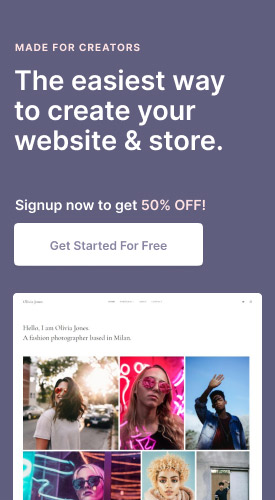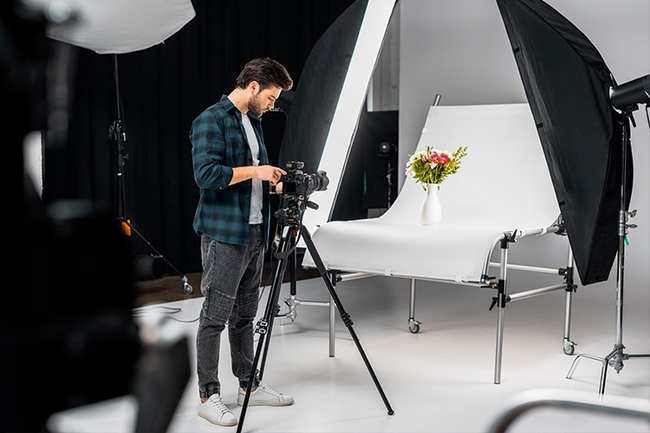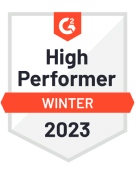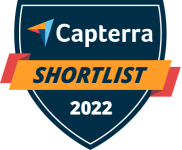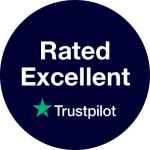Creating a beautiful portfolio website to showcase your products, services, or content to your established clients is an excellent start. But because you’re running a small business, you need an avenue to grow and acquire new clients. New users around the world discover new content, such as yours, through search engines. This is why photographers and creatives need an SEO guide.

What is a Search Engine?
A search engine is an internet-based tool that allows people to search for specific terms from websites across the world wide web. Google, Bing, and DuckDuckGo are well-known examples of search engines.
With hundreds of millions of new sites coming up every year, search engines are forced to decide which ones are more relevant to a particular search query. A website with content that is more valuable to its users will rank higher on the Search Engine’s result pages.
To rank pages on the web, search engines use certain secret rules which may change from year to year.
What is SEO?
Search Engine Optimization, or SEO, is the method that site owners use to become discoverable and obtain a higher rank in a Search Engine Result Page (SERP).
Why is it important to rank higher in an online search? Because the higher you rank, the larger the number of potential clients who get to see you.
People generally do not look past the first search result page to get to what they want. In Fact, the top 5 web search results account for nearly 68% of all clicks made on Google.

Website SEO is vitally important for growing businesses. In what follows, we explain what SEO means for photographers and creatives. Because Google is the most dominant search engine in use, this article will focus on Google SEO. We also explain how you can use in-built SEO tools in Pixpa to have Google automatically include your site in their rankings.
Finding the Right Keywords
Photographers and creatives need to learn SEO skills to differentiate themselves from the millions of competitors vying for the same niche and presentation of content to the public. If you have an Image-heavy website, you need context to stand out and be ranked highly by search engines. Hence, you must follow organic SEO best practices - methods that do not require you to pay Google for every click made on a link to your website.
The first step in photography SEO is to find all the keywords that are relevant to your business. These are the phrases that people type into a keypad or speak into Google’s voice search when they’re looking for something online.
Keywords depend on the industry you’re in, your target audience and the market environment. Here’s an excellent reference for using Google’s Keyword Planner to find your relevant photography SEO keywords. You can create and publish money pages using the most searched for keywords in your niche. These will provide you the highest ROI.
You can narrow down keywords according to the genre you’re in by using long tail keywords. For example, ‘travel photography in Kenya’. In this phrase, ‘travel photography’ is the main keyword, but ‘in Kenya’ adds important information at the tail.
Use the Keyword Planner to identify the most searched for terms in your niche. Alternatively, you can study the keywords used by competitors. Make sure that you use both broad search terms as well as some unique words that accurately describe your brand personality.
Include keywords throughout the content on your website - domain names, headers, footers, and on-page content. You should also add keyword synonyms that match your target audience, your niche segment, and your brand.
Adding Page Titles, Headings, Tags & Page Descriptions
Search engines give priority to effective page titles for SEO rankings. Every page must have a header and a small description that precisely describes what the page is meant for.
These headers and meta descriptions will appear as snippets on a search result page. The page title will show up in your browser tab. Use the keywords you searched for earlier to make meaningful statements.

If you are a portrait photographer, your home page description could sound something like this: ‘Portrait photographer based in Newport, Oregon. Specialist in Portfolios, B&W, Family Portraiture’. This snippet would appear next to your H1 header on a Google keyword result page.
A Meta Description would ideally be up to 155 characters long. The H1 header ought to be up to 70 characters in length. Here’s a useful guide to help you add SEO titles and snippets to your webpages.
Image Optimization for SEO: Use Alt text
Search engines cannot read or interpret pictures on their own. To optimize visual content, photographers and creatives need to add text with relevant Alt text, Alt titles, and Captions to make their images searchable. Learn how to add metadata for your Pixpa gallery images and webpages here.
- Group together similar images when uploading them to galleries, so that users can access files faster and in a natural order.
- Never use generic image names such as 'DS003.jpg'. Instead, use the image theme to create the name, for eg. 'nightfall.jpg'.
- Use long tail keywords for image captions and tags for better image SEO.
Image optimization for SEO includes uploading smaller pixel sizes for faster browser load times and responsive UI. Make bigger sizes available only when a user is interested in buying digital downloads or prints.
For JPEG images, the ideal web page optimized image size is 75% of the original. Photographers may often capture camera images in RAW format. But RAW files are too big and slow to load in a browser for optimum user experience.
In comparison, JPEG formats are lighter and quick to load. Digital formats captured in JPEG make for easy corrections for issues such as vignetting, distortion, and chromatic aberration. Even where RAW captures more details, we recommend using free online RAW to JPEG converters before you upload images to your website.
Use mobile responsive image resolutions with proportional width to height ratios as far as possible. This will help pages resolve better to mobile, smartphone and tablet screens.
In fact, nowadays resizing is very easy and you can even do it for free using image resizer from imageresize.org.
Use Page Hierarchy for seamless User Experiences
SEO optimized web pages for photographers have minimum repeated content. Do not worry about white space. A minimalist web page draws user attention to the things that matter. Organize images and content in well-defined page categories and use simple, meaningful website menu items.
Whether your homepage uses a full-screen image, moving slides, or a grid layout - users pay maximum attention when everything is categorized and organized. This allows the user to navigate between pages without getting confused and leads to faster load times on mobiles, tablets, and notebooks.
You can achieve maximum impact when your pages and menus are arranged in a hierarchy. This means that you arrange your images inside galleries and albums. Pixpa allows you to create galleries within albums by default. It also provides an in-built hierarchical menu that can be easily customized or modified when required.
Using Images within a Blog Post
As a visual artist, you can understand how colors and patterns affect human psychology to build an atmosphere and create a story. So choose blog images that convey the desired intent.
Some of your blogs may require a pictorial explanation. Use your knowledge of best photo editing apps to redesign images into infographics. Use witty illustrations to support the arguments you make. Checkout this detailed guide from Visme for more information: How to Make an Infographic
Adding appropriate images to your blog posts enhances comprehension exponentially.
Setting up Indexing on your Domain and Web Pages
How Google Search works
Google fetches it’s search results by sending search bots to scrub your site for keywords used in the search query. It may use links on your page to further search for keywords within those linked pages. This process is called ‘crawling’ a website in SEO.
Crawling helps create a database or index of queries. Whenever a user performs a search, the engine looks up this database to find matching results. SEO rules or algorithms are then applied to rank and display the search results.
Adding a Sitemap
Before getting a Search Engine to crawl and index your website, you need to create a sitemap. A sitemap is like a website schematic that tells search engines how your content is structured. It also tells search bots how different page elements are linked together to create a more user-friendly resource.
Submitting a sitemap is recommended for photographers and visual artists who may have thousands of videos or images with different file sizes on their websites.
Adding a sitemap means that you embed a file called ‘sitemap.xml’ within your page’s HTML code (the coding language in which content appears on your browser). Videos, images, and gif files will need to display attributes such as run time, age-appropriateness, type, license, and so on for more intuitive browsing experiences.
A sitemap is automatically created and updated whenever you publish your pages on Pixpa. You can also choose to have Google not crawl your site either as a whole or particular pages at a time. This can be useful when your portfolio site is under construction or when you haven’t yet added safety precautions protecting copyright.

Getting Google to crawl your website on Pixpa
To get ranked on Google, you have to be visible to it first. When you want Google to crawl your photography website for the first time, you must first verify that you are the domain owner of your site. There are several ways to do this, but the most common method is via Google Search Console.
To start with Google Search Console, you must have a Google email account. Browse to Search Console and log in with your Google account. Select whether you want to verify your site ownership via your domain or a URL prefix. Use the first option if you own a web domain on a hosting site such as GoDaddy or Namecheap.
If you do not want to buy a domain, then Pixpa’s site builder lets you use a default domain to host your content. In this case, you must choose to verify site ownership to Google Search Console via the URL prefix option.
Once you input your site URL and click on ‘Continue’, you will be given a unique code. Simply copy Google’s one-line script and paste it as an external script as described here. It can take from a few hours to days for Google to process your crawl request. Once that is done, you can monitor your search performance on the Console dashboard.
Bing users can learn how to have their website crawled here.
When you add new images/galleries/blogs, search engines don’t automatically update their database for new content. You can have search engines re-crawl your website to add SEO points here.
Writing Powerful Copy for your website
Search engines are designed to pick cues about site quality from pieces of content that you write on pages on your site. As a photographer, you may find it easier to exhibit photos rather than string up appealing text. However, there are just a few simple rules that you ought to follow to produce great website copy.
- Use Keyword optimized Page titles, H1, & H2 headers.
- Keep your copy simple.
- Try to use Active Voice.
- Talk to your customer or client directly.
- Be brief and precise.
- Use your keywords.
- Tell a story.
- Make it scannable and readable.
- Page Headers and website text/copy should relate to each other.
- Edit your Copy before you publish it.
Place Keywords in a Natural Flow
When writing content, mingle keywords strategically in a way that seems natural to humans. Keywords should appear in context and order. Don’t ever overuse keywords. Ditto for Call-to-Action (links to a store/asking a user to perform an action) buttons.
Think about what your potential customers or those who want to hire you are looking for. Then write what you would say to them. Be relevant and to-the-point. But there’s no harm in letting a little passion creep through.
Here’s an example of keyword optimized copy combined with stunning visuals.
Blog regularly for SEO
Apart from penning down your thoughts and conveying your personality, blogs serve a fundamental purpose in SEO - to answer the questions that your target audience is asking. Consider a blog as a landing page for a particular audience problem. Then focus your blog content on providing answers and solutions to these questions and issues.
Cover as many aspects within a single blog as are necessary to make a structured blog post. Add links to answers for questions that are incidental or are so long to answer that they divert attention from the main issue.
Remember that the more relevant and useful your blog post, the more likely it is that people enjoy reading it. That means that they will spend more time on that page - a critical search ranking factor in SEO.
Some photographers and illustrators find it more natural to publish photo blogs or image blogs. If you’re creating a purely visual blog, make sure that you name the images correctly. For example, travel photographers can name restaurants, resorts, beaches, nature trails, etc. To differentiate photographs, add aperture, focal length, ISO values, time of day, and so on.
Also, consider adding a brief text to describe the ideas and knowledge you used to hone down on an image. Portrait photographers, for example, can explain why particular lighting was chosen. Illustrators can list out the pens and colors they used.
SEO blogs should have H1 & H2 headers with keywords as a rule. Your opening sentence should contain the main blog keyword. At least one H2 (subheading) tag should contain a related keyword.
What should be my ideal blog keyword density? The number of times you can use a keyword (keyword density) should ideally remain between 1-3% but it all depends on the context.
If you have a product or service to sell, ensure that you include a Call to Action in the closing statement. For more tips on how to write great content, refer to this article.
Get your Website Listed in Business Directories
You can’t run a photography or design business without listing yourself in digital directories. Such a listing adds legitimacy to your website. One such website is Photognow.com, they provide an easy to use submission form for creating and publishing your business listing. It is recommended that you complete as much information as possible including a website, pictures, opening hours, FAQs, tags and keywords as all of this will help in search results. Search engines like Google and Bing will refer to your business objects with reviews and feedback that you receive on a directory.
Importantly, for SEO, business listings provide a safe source of backlinks that refer visitors to your site. Here is a list of reliable online Directories you can put yourself in.
Always remember to include the most important information in your business profile and maintain NAP (Name, Address, Phone number) consistency:
- Name (legal name preferred for business entities)
- Location/City/Country
- Contact Information
- Business Type, e.g., commercial photographer, graphic designer, etc.
- Local Business search tags/phrases
- Value Proposition (Awards, Specialties, Education, Projects)
Make sure to find and eliminate NAP inconsistencies between your website and other sites listing your business. You can also opt to outsource directory submissions if you feel this task is taking your considerable time. Some SEO agencies are offering the service at an absolutely affordable cost.
Use Content Delivery Networks (CDN) for Faster, More Secure Page Downloads
On certain older web hosting platforms such as Wordpress, you can increase the speed of web pages by letting local servers (part of a CDN) store and transmit your website data. This may sometimes prevent hackers from accessing your website by loading user data from a secure node nearest to the site visitor's geographical location. This leads to safer and more reliable User Experiences and has a positive effect on SEO.
CDN implementations can be tricky and unless you're a Networking professional, best left to experts. Otherwise, there's a good chance it can even hurt your SEO. DIY platforms such as Squarespace and Pixpa, handle CDN for you at the backend. By following SEO best practices, these applications automatically do the CDN grunt work for you leaving you free to focus on your art. Squarespace is a good website builder, but there are others that might be even better for you, check out these squarespace alternatives guide to understand better.
Building Link Juice
Having another website link to your page is an internet vote in your favor. How much weight that vote carries, however, depends upon the SEO strength of the referring website.
If you are considered an authority on a particular subject matter, search engines will give you a higher preference within search results. Now, when you link to someone else’s page, you are sending a recommendation to visitors to check out that linked page. Because you’re considered an authority, your vote will have a higher value than most.
A search engine will penalize your site by removing it from search rankings or dropping your SEO points if you link too often to pages with low domain authority. These could be empty websites dedicated solely to deposit backlinks and acting to trick search engines into counting these votes as valid. Such ballots will harm your ranking.
The main aim of sharing links is to recommend reliable resources to site visitors. It makes sense for wedding photographers to refer people to portrait photographers within a region and receive professional recommendations in return.
It helps to hit up people on Facebook/Instagram/Twitter, meet colleagues at chatroom conventions, email experts to review your portfolio, etc. Politely ask for references to your web profile. These are all web versions of business networking and significantly impact your site’s SEO reputation.
When sharing links, use relevant keywords for the referring hyperlink. Apply similar words and vary link text (anchor text) for maximum SEO votes.
One important aspect of link building is that you should also link pages within your website to each other. This way, you spread ‘link juice’ within your platform.
Analyzing Site Performance Metrics
As a platform owner interested in growth and visibility, you should monitor your site search performance regularly. You can observe search metrics in several ways. Google Analytics is one of the most reliable tools for gaining marketing insights, audience profiles, browsing behavior, analyze website and so on. It is also free for use and therefore quite popular.
To start with Google Analytics, you need to create a Google account and log in. Your Google email and password will be exclusive to your website. Nobody else can access this data. Pixpa allows you to link Google Analytics with your webpage by pasting in your Analytics generated user code.

The Analytics dashboard lets you instantly check how many people visited your site, the time they spent, and whether they clicked on any other links within your web page.
You can analyze website traffic by source and referrals. If you really wish to market your business website, you can even create charts and reports by examining demography, geographic location, interests (other than your site), and more.
Let Social Media to Drive Traffic to your Website

Social media is a massive marketing tool on its own. Well over 40% of the world’s population is on social media. Of these, 90% are millennials, 77% Gen Xers, and 48% baby boomers. Whatever your portfolio goals, more than a few members of your target audience can be located on a social network.
No matter which platform you use, ensure that at least one of them allows you to create an official business page.
Although social media content is not directly ranked by search engines for SEO, social pages can generate interest and engagement for your work and, in turn, drive traffic to your professional website.
If you’re a photographer or artist uploading your photos on social media, ensure that you make some form of copyright claim over your images. Preferably use a watercolor scheme to protect your pictures or use minimal resolutions.
Pixpa enables you to integrate social media handles within your website instantly. You can also allow social media sharing directly from your client galleries, update site changes across Facebook and Google, and add Instagram snippets from your social stream.
Increase visibility with Local SEO
If you run a local photography business, then you need to add additional geo-tagged keywords in your content. For example, a wedding photographer may use phrases such as ‘Wedding photographer in Philadelphia’ or ‘Wedding Photography near Easton’.
Add content links to sites that review local businesses, such as Yelp. Also, add links in your contact info to Google Maps. These additions will ensure better audience targeting for local businesses.
If you own a physical studio/office, Pixpa lets you add your location to Google Maps. You should pin your location on a map block on a Contact page. Add business information to every footer on your website for professional impact.
Add an SSL security layer
Google has officially admitted that you get higher SEO points for making your site more secure. URLs starting with https:// are more secure than those with http://.
The former has a distinct advantage when you’re sending data from your servers to your website. Accepting payments from eCommerce stores is protected by a Secure Sockets Layer (SSL) encryption. This means that data cannot be decrypted by a hacker even if he intercepts your signal.
If a user visits a site that is SSL secured, a padlock symbol appears before the site’s URL in the browser address bar.
All websites built on Pixpa are SSL secure by default.
SEO Power Tips
- Give equal emphasis to both on-page SEO (titles, tags, sitemaps, copy, blogging) and off-page SEO (social media, backlinks).
- Use internal links to increase time spent on your site, and lower Click-through rates and bounce rates.
- Regularly perform SEO audits of your website by using Google Analytics, Search Console, Screaming Frog, and many other Free online SEO audit tools.
- Even if you aim to create a lean, minimalist website design, use a few essential keywords on your pages to get the most out of your SEO.
- Keep adding new blog pages, meta tagged images, and make sure your content is fresh and useful. Use FAQs to help your audience.
- Keyword stuffing, duplicate content, using the same keywords everywhere are going to be penalized by search engines.
- Use 301 redirects: If you have just redesigned your website, old pages whose content has now been moved may have earned some SEO juice over time. You can reroute queries going to the old link to your new page and carry forward SEO value.
- Ensure that your hosting platform's uptime remains above 99.9%.
- Study SEO tactics adopted by your competition - the topics & keywords they use. Don’t copy them but be inspired to give voice to your brand and niche.
- Don’t be afraid to change an SEO initiative that is not showing results.
Conclusion
How high your site gets ranked on any search engine is a function of the user experience that you deliver, the authority that you wield as an expert, and the influencers who vouch for you. However, Search Engine Optimization is a continuously evolving area. Google updates its search algorithms every year. Other engines may act similarly.
SEO strategy is not a one-time task to be completed and forgotten. You need to monitor and keep up with changing trends continuously.
Get started with delivering great website experiences by applying these principles to your portfolio website. If you still haven’t made one or are looking for a new digital home, Pixpa offers a fully automated SEO platform designed for photographers and creatives.
Start your 15-day Free Pixpa trial today.
